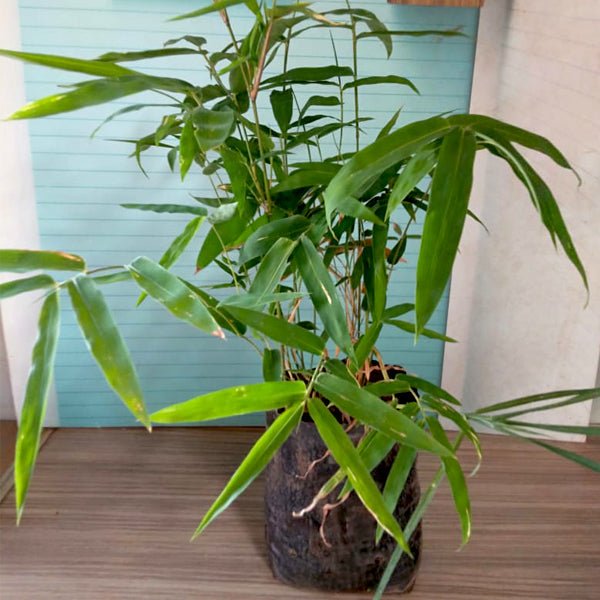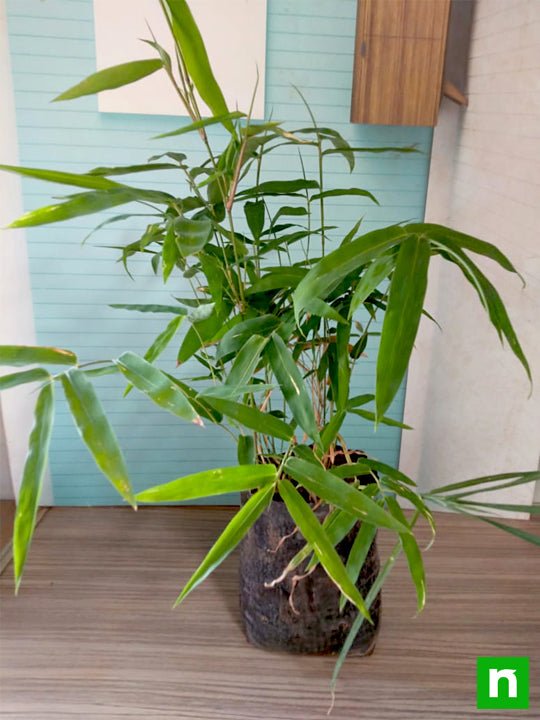Description
Bambusa bamboos, the giant thorny bamboo, Indian thorny bamboo, spiny bamboo, or thorny bamboo, is a species of clumping bamboo native to southern Asia.
It is a tall, bright-green-colored spiny bamboo species, which grows in thickets consisting of a large number of heavily branched, closely growing culms. It reaches a height of 10 to 35 m and grows naturally in the forests of the dry zones. Leaves are lance-shaped with a long pointed tip.
They measure between 15-30 cm long and 8-15 mm broad, with about 10 leaves in each compliment.Plant Specifications
| Plant Height | 24 inch (61 cm) |
| Plant Spread | 6 inch (15 cm) |
| Common Name | Giant thorny bamboo, Indian thorny bamboo, Spiny bamboo, and Thorny bamboo |
| Maximum Reachable Height | 35-100 feet |
| Flower Colour | Rarely |
| Difficulty Level | Easy to grow |
Planting and care
Giant thorny bamboo care
It is propagated through seeds. sow the seeds in a pot when the temperature is 20 degrees C. Water the seeds regularly. Seeds will germinate in 8-10 days. Place the seedlings in the light shade until they fully establish.
Plants can be propagated vegetatively by rhizome, culm and branch cuttings. The propagules are raised in a nursery and after they have produced roots and developed rhizomes they are planted out in the field during the rainy season in pits filled with a mixture of compost and soil.
| Sunlight | Full sun to partial shade. |
| Watering | Water the bamboo plant moderately. |
| Soil | Grows best in a fertile, and moist soil. |
| Temperature | 20-30 degrees C |
| Fertilizer | Bamboo responds well to organic fertilizers like compost, vermicompost and dried farmyard manure. |
Giant thorny bamboo special feature
It is a plant of Punarvasu Nakshatra.
Giant thorny bamboo uses
Ornamental Use:
- It can be used as an ornamental fence
Medicinal Use:
- The plant contains high levels of silica and is used in many ways in Ayurvedic medicine
- The root is astringent and cooling
- It is used to treat joint pain and general debility
- The leaves are antispasmodic and emmenagogue
- They are taken internally to stimulate menstruation and to help relieve period pain
- They are also taken to tone and strengthen stomach function, and to expel worms
- The young sprouts, harvested as they emerge from below soil level, are taken internally to relieve nausea and indigestion
- The juice of the plant is rich in silica and is taken internally to aid in the strengthening of cartilage in conditions such as osteoarthritis and osteoporosis
Culinary Use:
- Its young shoot are harvested as they emerge from the soil and cooked as a vegetable
- The sugary sap is made into a drink
- Seeds are also edible




Comment